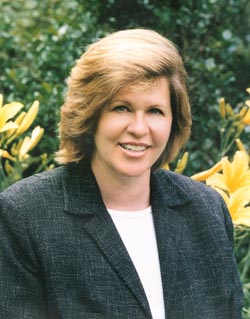Most students aren’t getting their ‘fair use’
Because of a misunderstanding of copyright laws, teachers and students aren’t getting the education they should, a new study says
 Photo courtesy Renee Hobbs
Hobbs
|
If your media literacy teacher decides to use a piece of video you downloaded from “The Jerry Springer Show” as an example of stereotyping in popular culture, she could get in trouble for copyright infringement.
Or could she? According to a new study on media literacy, your teacher might not know, and because of that, she won’t show the clip, no matter how perfect an illustration of the concept of stereotyping it is. “The Cost of Copyright Confusion for Media Literacy,” a joint study conducted by Temple University in Philadelphia and American University in Washington, D.C., showcases the disconnect between what media literacy teachers think they know about copyright laws and what these laws actually say. The study, which was financed through a grant from the John D. and Catherine T. MacArthur Foundation, was released to the general public on Sept. 25 at American University’s Washington College of Law. |
|
Dale Allender of the National Council of Teachers of English, Karen Zill of the Alliance for a Media Literate America, and Kenneth Crews, of the Indiana University School of Law and a leading expert on copyright in education, will be on hand at the event to provide their insights. Using interviews with 63 media literacy educators from across the country, the researchers — Renee Hobbs, a professor in the School of Communications and Theater, Pat Aufderheide, director of the Center for Social Media at American University in Washington, D.C., and Peter Jaszi, a professor at American University’s Washington College of Law — found a disconnect between what media literacy teachers know about the so-called “fair use” doctrine, and what the law actually says. That disconnect has led to many teachers playing it safe and not using such things as commercials, music video mash-ups, and other copyrighted materials in their roles as media literacy educators for fear of facing legal action, Hobbs said. “More than any other teachers, media literacy teachers depend on using copyrighted materials in their work,” Hobbs said. “But teachers don’t know what they should about their fair use rights.” As they interviewed the teachers, the researchers found abundant examples of this disconnect and how it’s impacted media literacy education for students, Aufderheide said. For example, they found teachers who were afraid of showing actual commercials in class, teachers who wanted to use YouTube but weren’t sure it was legal to do so, and teachers who couldn’t get parts of their curriculum published because they contained copyrighted materials, thus forcing them to result to self-publishing, Aufderheide said. But what makes matters worse is that media organizations themselves often don’t know what’s permissible under the fair use doctrine and what isn’t permissible, Hobbs said. In one instance, Newsweek magazine editors told a professor that she needed a series of permissions from story subjects (including one from Osama Bin Laden) for use in a curriculum titled “Media Constructions of War.” The professor worked with university lawyers to apply her fair use rights and use the stories in class. "The creative consequences of these constraints are both immediate and long-term," Jaszi said. "Teachers limit their own analytical and creative efforts, and they also teach students — both affirmatively and by example — a culture of fear around copyright." Fair use, the venerable copyright doctrine that permits reasonable quotation of copyrighted works without permission or payment, is far more available to teachers than is currently understood or practiced. “When documentary filmmakers established what they thought was reasonable fair use, it made a big difference to documentary practice, without crimping the marketplace,” Aufderheide said. She and Jaszi coordinated a Documentary Filmmakers’ Statement of Best Practices in Fair Use, which has changed industry practice. “That is the example that teachers can follow, now that the cost of their own copyright problems is clear.” Now that the problem has been identified, the next step is to fix it, Hobbs said. Toward that end, the professors will focus on helping media literacy teachers better understand what they can and cannot do when it comes to using copyrighted material. To learn more about fair use rights, visit www.centerforsocialmedia.org/fairuse. |
|